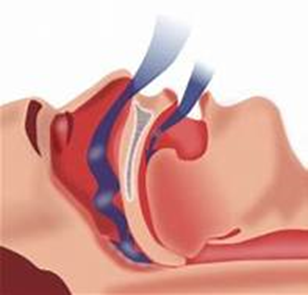There are three types of sleep apnea: obstructive, central, and mixed complex.
Obstructive apnea is the most common type.
It is caused by the relaxation of the soft tissues, which allows partial to total obstruction of the airway.
True
False
The Correct Answer is A
There are three types of sleep apnea: obstructive, central, and mixed complex. Obstructive apnea is the most common type. It is caused by the relaxation of the soft tissues, which allows partial to total obstruction of the airway. (True or False) = The correct answer is True.
Choice A rationale:
True. Obstructive sleep apnea is indeed the most common type. It occurs when the soft tissues in the throat and the muscles of the upper airway relax too much during sleep, leading to a partial or complete blockage of the airway. This obstruction results in the characteristic pauses in breathing that are a hallmark of obstructive sleep apnea.
Choice B rationale:
False. Obstructive sleep apnea is not caused by the need for hypnotics or sleep-inducing medications. It is a physiological condition related to airway obstruction during sleep and not a result of poor sleep hygiene or a lack of medication.
Choice C rationale:
False. While it's true that older adults may have changes in their sleep patterns, this doesn't mean they require 10 hours of sleep a day to prevent fatigue. Sleep needs can vary among individuals, and older adults often experience more fragmented sleep and may nap during the day, but the requirement for 10 hours of sleep a day is not a general rule.
Choice D rationale:
False. Older adults may nap more during the day due to changes in their sleep patterns, but it doesn't necessarily mean they need to nap less to sleep better at night. The sleep-wake cycle of older adults may be different from younger individuals, and it's not always necessary for them to reduce daytime napping to improve nighttime sleep.
Nursing Test Bank
Naxlex Comprehensive Predictor Exams
Related Questions
Correct Answer is C
Explanation
The correct answer is: C. Decreased energy.
Choice A reason: Hypotension is not typically associated with obstructive sleep apnea (OSA). OSA is more commonly linked with hypertension due to the frequent arousals during sleep that activate the sympathetic nervous system, leading to increased blood pressure.
Choice B reason: Pneumonia is an infection of the lungs and is not a direct consequence of OSA. While OSA can affect the respiratory system, it does not cause pneumonia. However, individuals with OSA may have a higher risk of respiratory infections due to compromised breathing during sleep.
Choice C reason: Decreased energy is a common symptom of OSA. People with OSA experience repeated episodes of partial or complete upper airway obstruction during sleep, leading to disrupted sleep patterns and insufficient rest. This results in daytime sleepiness and fatigue, which are hallmark signs of the condition.
Choice D reason: Thyroid disease, specifically hypothyroidism, can be associated with OSA, but it is not a direct finding of the condition. Hypothyroidism can lead to changes in the soft tissues of the upper airway and contribute to the development of OSA, but it is not a symptom used to diagnose OSA.

Correct Answer is ["A","B","C","D","E"]
Explanation
Choice A rationale:
Culture can influence a person's perception and expression of pain. It's important to consider cultural factors when assessing and managing pain because beliefs and attitudes about pain can vary significantly among different cultural groups. This can affect how pain is experienced and communicated.
Choice B rationale:
Psychological factors, such as anxiety, depression, and coping mechanisms, play a significant role in the experience of pain. Assessing psychological factors is essential for a comprehensive understanding of the patient's pain experience and developing appropriate pain management strategies.
Choice C rationale:
Understanding the patient's history of pain is crucial for a focused pain assessment. Previous experiences with pain, including the cause, intensity, and effectiveness of previous pain management strategies, can provide valuable insights into the current pain situation.
Choice D rationale:
Assessing contributing factors, such as concurrent medical conditions, injuries, or environmental factors, is essential to determine the underlying causes of pain and develop an effective pain management plan.
Choice E rationale:
Verbal indicators are essential for assessing pain. Patients often describe their pain in words, and understanding their descriptions and expressions of pain is fundamental to evaluating its intensity, location, quality, and duration.
Whether you are a student looking to ace your exams or a practicing nurse seeking to enhance your expertise , our nursing education contents will empower you with the confidence and competence to make a difference in the lives of patients and become a respected leader in the healthcare field.
Visit Naxlex, invest in your future and unlock endless possibilities with our unparalleled nursing education contents today
Report Wrong Answer on the Current Question
Do you disagree with the answer? If yes, what is your expected answer? Explain.
Kindly be descriptive with the issue you are facing.
